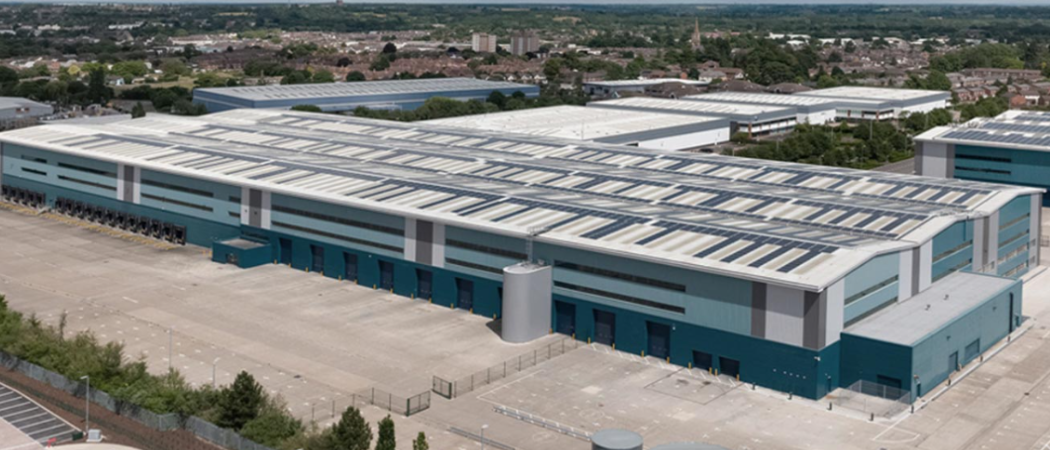A COVID-19 testing laboratory that is surplus to requirements has been put up for sale by the UK government. Like other redundant research facilities before it, there is now an opportunity to build the local life sciences ecosystem

The Rosalind Franklin Laboratory in Leamington Spa, UK. Photo: WSP
The sale of a vast COVID-19 testing lab in the UK is an opportunity to develop the start-up ecosystem in the Midlands region. But what form of repurposing would serve the region best: a general life sciences hub, or a specialist research and innovation centre?
Both options have been floated for the Rosalind Franklin Laboratory in Leamington Spa. The town to the south of Birmingham and Coventry is neither an academic nor an industrial hotspot. However, it is within reach of both cities and their research-intensive universities, and not too far from the arc that connects Cambridge and Oxford to the south.
“Just because it doesn’t have the companies at this moment, doesn’t mean to say that it can’t attract them with the right support and investment,” said Melanie Davidson, chief executive of Medilink Midlands, the life sciences industry body for the region.
The estimated £1 billion of public money that has been invested in the facility should be a firm foundation. “If you were building something from scratch, you probably wouldn’t choose Leamington Spa, because there is not a lot else going on around it,” said Glenn Crocker, executive director at ecosystem developer Pioneer Group and founder the BioCity innovation centre in Nottingham. “But could you make do with something that is there already? Possibly.”
The Rosalind Franklin Laboratory opened in July 2021 on a converted industrial site. The 2.2-hectare facility incorporated nine separate lab lines capable of processing thousands of PCR tests every day. According to project designer WSP, the lab was one of the largest diagnostic testing facilities in the world.
As the pandemic subsided activity at the lab wound down, and it stopped processing tests a year ago. In November 2023, it was offered for commercial lease, with the agent Avison Young pitching the site as suitable for both small and large life sciences companies.
“The lab has the potential to become a new hub for pioneering R&D, supporting the transition of incubated proven science into larger scale operations through collaboration between government, industry, and academia,” Avison Young said.
Private office space attached to each lab line meant further smaller labs could be created, and the whole facility has communal areas, offices and services such as electric vehicle charging.
A different tack was suggested earlier this month by the House of Commons Science, Innovation and Technology Committee, which called for the facility to remain in public hands and become a research lab specialising in the use of bacteriophages as antibiotics. The UK is lagging in this area because there are no facilities with regulatory approval to produce phages for clinical trials.
Noting the £1 billion in public funding invested in the lab, committee chair Greg Clark said this would be better than it being “lost to the nation and to science in a firesale”.
The committee’s report went on to recommend that the government consider establishing a small GMP facility on the site, to be used by companies who cannot afford to invest in such facilities on their own. This would modelled on the Catapult centres, which provide shared facilities for companies working in areas including cell and gene therapy, and medicines discovery.
Similar initiatives
There a number of examples of large research labs being rescued from closure to become the focus of an innovation cluster. One example is the former Pfizer facility in Sandwich in Kent, another is the Daresbury nuclear physics research centre in Warrington, which was rescued from closure to form the hub of a science park at the turn of the millennium.
Just down the road in Alderley Edge, near Manchester, AstraZeneca’s historic research labs were reborn as a home for life sciences start-ups after the pharma company moved its R&D to Cambridge in 2013.
Assessing the opportunity presented by the Rosalind Franklin Laboratory for the Midlands is not straightforward. The region has a vibrant life sciences sector with strengths in medical technology and medical devices, but slightly less activity when it comes to pharmaceuticals and biotechnology.
At the same time, it has several research-intensive universities and a strong network of medical schools and hospitals, which makes the region a good proving ground for medical innovations. “The population is quite stable and fairly diverse, so the region is good at attracting clinical trials across all sorts of disciplines within life sciences,” said Davidson.
Space to grow
Where the region struggles is in attracting investment, which means that start-ups are often tempted to relocate towards the south east of England. Finding space to grow can also be challenging. “It’s a fast-growing sector, and real estate provision is always trying to keep up,” said Crocker. “For the past ten years or so there has always been more demand than space, and I don’t see that changing.”
Davidson agreed, “When we survey our members and our wider network, 80% of them say that they need more space for laboratories and growth more generally,” she said.
Initiatives such as BioCity in Nottingham and the Charnwood Campus near Loughborough, both developed on former pharma company sites, have gone some way to meeting that need. Others are in the pipeline, such as the Precision Health Technologies Accelerator in Birmingham. “That will fill some of the gap in terms of wet lab space and prototyping, but there is always room for more,” said Davidson.
And there is a particular shortage of lab space that conforms to good manufacturing practice standards, not just for phage R&D but for any start-up that aspires to put a product into clinical trials or into the food chain.
“Companies can make do up to a certain point, but once they start to scale-up they need this kind of space,” Crocker said. “For a small company it can be prohibitively expensive to build this themselves.”
Creating a life sciences centre at the Rosalind Franklin Laboratory with an emphasis on GMP facilities would help meet that need. “This is already set up as lab space and for healthcare, so it makes sense to continue using it that way, rather than the building being gutted and sold for some other purpose,” Davidson said.
However, Crocker said, “The one thing we’ve learned from BioCity and other projects is that you can’t just open a building and wait for people to walk in.” “Social and financial infrastructure is needed to support companies.
This means bringing together all of the components that early-stage start-ups might need to succeed, from intellectual property and accounting support, to big pharma companies willing to act as mentors or future partners. Around London, Oxford and Cambridge these actors are already in place, but in most other locations the ecosystem needs to be developed.
“Particularly if you are working with a blank sheet of paper, as you would at Leamington Spa, you would want to concentrate as many of those players in a small space as you possibly can,” Crocker said.
The key link in the chain is the investment community, and in order to build that, you need outstanding founders. “Investors back people, not just the technology,” Crocker said. “So, are the people there who would lead companies that would draw in investment?”
A research flagship
The phage manufacturing site and innovation centre put forward by the House of Commons select committee could also be an asset for the region, according to Davidson. “This could draw in new companies, in areas that are new to our sector, and that could be a real bonus,” she said.
A phage centre might also benefit from the clinical trial capability within the region. “As well as developing their products at the centre, companies could access the universities and the hospitals, their clinical trial expertise and the patient cohorts, to run clinical trials and test the products,” Davidson said.





 A unique international forum for public research organisations and companies to connect their external engagement with strategic interests around their R&D system.
A unique international forum for public research organisations and companies to connect their external engagement with strategic interests around their R&D system.